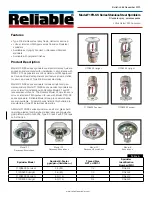
Audio Production System with Optional Networking
Output Listen
•
The output listen bus uses the same bus as AFL although signals are routed post any output delay.
•
Bus outputs including Mains, Auxes & Direct Outputs can have their post output delay listened to.
“PFL, AFL AND OUTPUT LISTEN” on page 153
for more information.
Bus Outputs
Main Outputs
•
Mains are primarily used to feed transmission and/or recording devices.
•
Multiple paths can be routed to mains. Mains can be routed to other mains.
•
Mains are available for patching and can have Equaliser, Dynamics and Delay processing applied.
Aux Outputs
•
Multiple mixes can be created by routing paths to auxes.
•
Each channel has individual send level and position controls for each of the 24 Aux outputs.
•
Auxes can be used in conjunction with mix minus outputs to create Interruptable Foldback feeds (IFBs).
•
Auxes can be controlled by logic functions to cut the pre fader send to each individual Aux, for controlling foldback
feeds in on/off air situations.
•
Auxes cannot be routed to any other bus/output.
•
Auxes are available for patching and can have Equaliser, Dynamics and Delay processing applied.
Path Outputs
Mix Minus Outputs
•
Each channel can have one mix minus output assigned to it, from a pool of 64 mono legs (shared with direct
outputs), providing an easy way to create a mix for a contributor using any aux, or the dedicated auto minus bus.
See
for more information.
Direct Outputs
•
Each channel can have one direct output assigned to it from a pool of 64 mono legs (shared with mix minus outputs)
to make signals available for patching. Direct outputs can be pre EQ, pre fader or post fader.
Console Outputs
Monitor Outputs
•
Each monitor output is available for patching to any I/O output port which can, in turn, be connected to a loudspeaker.
•
Monitor source controls are available from the touch display footer when in ‘active Show’ view allowing you to quickly
change monitor sources and the global user buttons can also be assigned as monitor source selectors.
•
Brio 36 has several monitor outputs available. For more detailed information see
“MONITOR CONTROLS” on page 150
.
Meter Outputs
•
In addition to the Console Monitor Prefade, PFL,AFL & APFL Meter outputs, there are four user meter outputs
available for patching directly to I/O box output ports to feed external, third party meters.
Summary of Contents for BRIO 36
Page 1: ...calrec com Audio Production System with Optional Networking BRIO 36 USER MANUAL V1 1...
Page 12: ...12 BRIO 36 Audio Production System with Optional Networking...
Page 13: ...calrec com BRIO 36 PRODUCT INFORMATION...
Page 20: ...20 BRIO 36 Audio Production System with Optional Networking...
Page 21: ...calrec com BRIO 36 SYSTEM OVERVIEW...
Page 29: ...29 FIGURE 1 BRIO 36 USER INTERFACE DISPLAY...
Page 43: ...calrec com BRIO 36 SETTING UP...
Page 47: ...47 FIGURE 1 SYNCHRONISATION OPTIONS...
Page 67: ...calrec com BRIO 36 GETTING SIGNALS IN AND OUT...
Page 93: ...93 FIGURE 1 THE DIRECT OUTPUT SCREEN...
Page 100: ...100 BRIO 36 Audio Production System with Optional Networking...
Page 101: ...calrec com BRIO 36 PROCESSING...
Page 146: ...146 BRIO 36 Audio Production System with Optional Networking...
Page 147: ...calrec com BRIO 36 MONITORING...
Page 149: ...149 FIGURE 3 EXAMPLE LOUDSPEAKERS SETUP...
Page 155: ...calrec com BRIO 36 METERING...
Page 163: ...calrec com BRIO 36 COMMUNICATIONS...
Page 172: ...172 BRIO 36 Audio Production System with Optional Networking...
Page 173: ...calrec com BRIO 36 ROUTING...
Page 175: ...175 FIGURE 1 CONFIGURING BUSES AND OUTPUTS...
Page 182: ...182 BRIO 36 Audio Production System with Optional Networking...
Page 183: ...calrec com BRIO 36 EXTERNAL INTERFACING...
Page 193: ...calrec com BRIO 36 CONSOLE FACILITIES...
Page 198: ...198 BRIO 36 Audio Production System with Optional Networking...
Page 199: ...calrec com BRIO 36 TERMINOLOGY...
Page 207: ...calrec com BRIO 36 FEATURES BY SOFTWARE VERSION...
















































